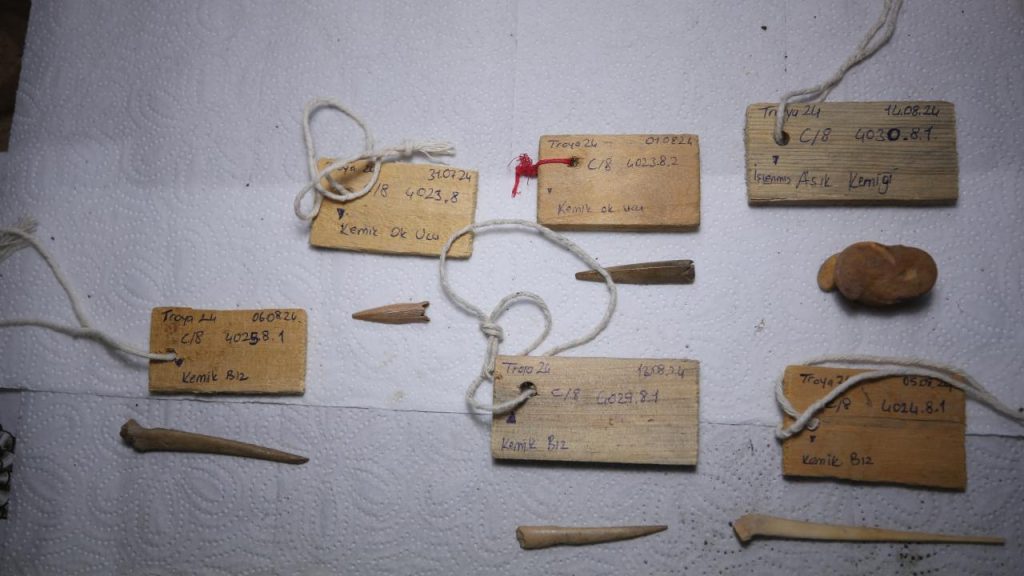The ongoing excavations at the ancient city of Troy, which has been on the UNESCO World Heritage List and officially excavated since the 1870s, have led to many archaeological discoveries. The work is being carried out for a period of 12 months with the permission of the Ministry of Culture and Tourism, and with the support of Çanakkale 18 Mart University (ÇOMÜ) and main sponsor İÇDAŞ AŞ. The findings from the excavations are providing important clues to archaeologists.
The head of the excavation team and Associate Professor at the Faculty of Humanities and Social Sciences of ÇOMÜ, Prof. Dr. Rüstem Aslan, mentioned that they are working on different areas within the prehistoric mound they refer to as the “Late Bronze Age fortress” this year. The aim is to answer some questions from previous excavations. They are specifically focused on understanding the chronological relationships of the defense wall and palace structures dating back to 1500-1600 BC that are associated with the Homer’s Troy. They aim to better date and understand the relationships between the structures Troy 6 and Troy 7, currently being excavated.
The excavation team is currently digging in front of the largest palace structure at Troy, known as the “6 M Palace,” one of the largest palace structures at Troy that was discovered in the 1893-1894 excavation season but fully excavated during the 1930s by Carl Blegen. The team is examining the relationship between the fortification wall and the palace structure, and the fill between them. Surprisingly, they found a significant number of bone findings in the Late Bronze Age context. Items such as arrowheads, bone awls, and a dice bone were discovered together in the same context. The team has begun laboratory work to clean and study these findings before they are transferred to the museum.
Prof. Dr. Aslan explained that the two arrowheads made from bone were well-preserved and were used for both hunting and warfare, being attached to arrows. He also mentioned the presence of bone awls used in leatherworking to extract oil from leather. The discovery of dice bones was particularly surprising, given that such findings are rare at Troy. The fact that all these items were found in the same layer and interconnected was unexpected and delighted the team.
The dice bone, which is used in games, dates back to the Neolithic period. This specific finding is a clear example of how such items were used in games for thousands of years. The team is excited about this unique discovery, as it is the first and only dice bone found in the last 10 years of excavations. Aslan pointed out that these artifacts found within the palace structure’s defense wall are not ordinary, indicating that they were possibly used by the ruling class in specific areas of the site.
Overall, the ongoing excavations at Troy are shedding new light on the history of the ancient city. With the discovery of unique artifacts such as bone arrowheads, awls, and dice bones, the archaeologists are gaining valuable insights into the daily life and activities of the people who lived in Troy thousands of years ago. These findings are enhancing our understanding of the Late Bronze Age fortress and palace structures at Troy, and are adding to the rich tapestry of archaeological knowledge about this iconic ancient city.


